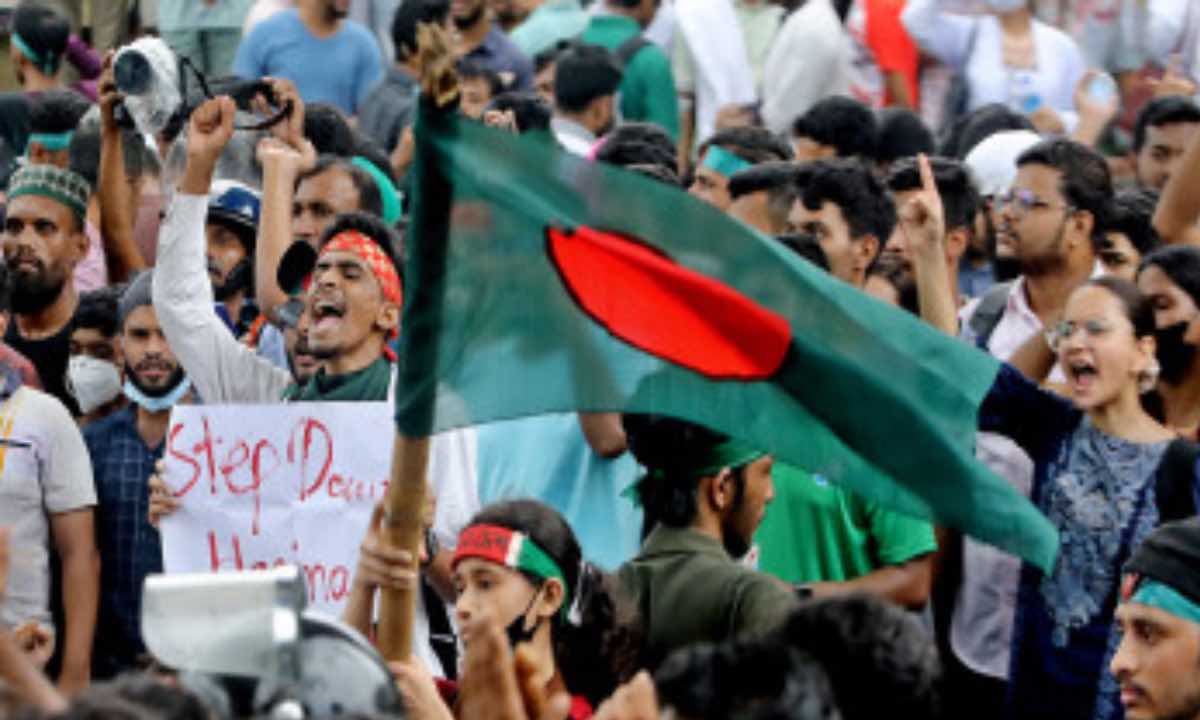Toastmasters Nepal celebrates Citation 2024
4 days ago
We are a team of professional management and journalists — one of the best in the Nepali media. Our duty toward our readers is to provide them with impartial news, bold views, in-depth analysis and thought-provoking commentary. We shall do this without fear or favor, and we shall be guided by nothing but our conscience.
Know More
This is a day that will be remembered for generations to come. A day when a 15-year-long authoritarian rule finally came to an end. A day when people truly rose to power, putting aside their differences and uniting in their desire for freedom and a better tomorrow. It will not be an exaggeration to say that the extraordinary showing of the student-mass movement that has led to the downfall of Sheikh Hasina—who came to power for a fourth consecutive term only this January—will henceforth be the new reference point in our history of mass uprisings.
The anticipation was building up even before the day began, with the planned "March to Dhaka" preponed by a day because of the urgency created by the events of the previous day. In what many called the second wave of violence, about a hundred people perished that day as ruling party activists and police clashed with anti-government protesters. During the first wave on July 18-21, over 200 people had died. So desperate protesters, seeing their demand for justice frequently trivialised, wanted an end to all the farce and violence with a final push. And at 4PM on Monday, with crowds from across the country heading to Dhaka to siege Gono Bhaban, disregarding a curfew, the army chief announced the resignation of Sheikh Hasina. An interim government will likely be formed soon to run the country.
In the coming days, we will know more about the interim government which we hope will swiftly deliver on the promises of justice for each of the killings and a peaceful democratic transition. But right now, let's recognise this moment in our history. Perhaps nothing describes the events of the past few weeks better than what the Russian revolutionary Vladimir Ilyich Lenin once said: that there are decades where nothing happens, and then there are weeks where decades happen. We have seen such eventful weeks in 1952, in 1969, and in 1990. But none of those uprisings claimed so many lives. None of them were against a democratically elected government, however questionable those elections were. This makes it all the more crucial that we remember the background in which this latest uprising was set, and ensure that our future actions align with it, otherwise the huge sacrifices that went into making it successful will have been for nothing.
The first goal of this movement was establishing justice for those who perished during protests marked by brutal crackdowns by security forces, aided by ruling party cadres. But then, because of the constant refusal of the government to recognise the gravity of the tragedy and conduct fair investigations, it transformed into a bigger fight against the very seat of power that favours the interests of a few over that of the vast majority of the people. It is this fight that has galvanised the whole nation, bringing together foes and friends alike. On Monday, people claimed their first victory in this fight. But the fight is far from over.
The extraordinary scenes that unfolded after the fall of the Awami League government highlighted both long-awaited joy and long-suppressed anger. Soon after the announcement, millions of people poured into the streets all over the country. Despite the lingering grief over the loss of over 300 lives during the brutal crackdowns, the atmosphere was electric and filled with hope and possibility. Families with children, elders, students—everyone was out on the streets. It was a kaleidoscope of colours and sounds. Marching down the streets, many were waving flags or chanting slogans, their voices rising in unison, a powerful testament to their shared struggle and newfound liberty.
These upbeat scenes, however, starkly contrasted with the scenes of devastation in many places. It was painful to see a repeat of the vandalism that once stained the movement so soon after its victory. Reportedly, mobs went about destroying and pillaging houses of ruling party leaders, ruling party offices, public properties, and key symbols of power including Gono Bhaban, Prime Minister's Office, police stations, etc. Even the parliament building and the Bangabandhu Memorial Museum at Dhanmondi 32 came under attack. Equally alarmingly, many houses, businesses and places of worship of the minority communities were reportedly damaged. Overall, at least 142 people were killed in violent clashes and vengeful attacks across the country. The breakdown of law in the aftermath of the government's fall is a reminder of how important it is to ensure calm and peace to avoid anarchy.
These upbeat scenes, however, starkly contrasted with the scenes of devastation in many places. It was painful to see a repeat of the vandalism that once stained the movement so soon after its victory. Reportedly, mobs went about destroying and pillaging houses of ruling party leaders, ruling party offices, public properties, and key symbols of power including Gono Bhaban, Prime Minister's Office, police stations, etc. Even the parliament building and the Bangabandhu Memorial Museum at Dhanmondi 32 came under attack. Equally alarmingly, many houses, businesses and places of worship of the minority communities were reportedly damaged. Overall, at least 142 people were killed in violent clashes and vengeful attacks across the country. The breakdown of law in the aftermath of the government's fall is a reminder of how important it is to ensure calm and peace to avoid anarchy.
Source: The Daily Star (Bangladesh)
Leave A Comment